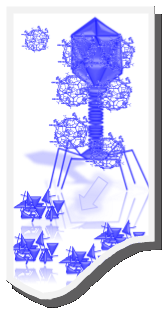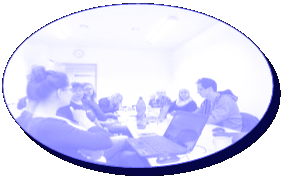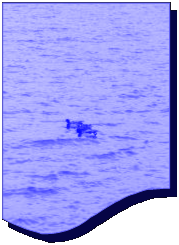|
Odborné aktivity a projekty
Biologie cvičení
Diplomová práce
Ph.D. práce
|
|
Biologists around the world routinely perform gene expression analysis to better understand living systems. Gene expression analysis examines the types and amounts of molecules produced by genes in living cells, telling us which genes are active and which are inactive at a given point in time. This reveals valuable information about the highly dynamic internal states of cells in living systems. NASA’s WetLab-2 hardware system is bringing to the International Space Station the technology to measure gene expression of biological specimens in space, and to transmit the results to researchers on Earth at the speed of light. “WetLab-2 is truly a first,” said Macarena Parra, WetLab-2 project scientist at NASA’s Ames Research Center in California’s Silicon Valley. “Investigators using WetLab-2 will be able to analyze the first run of a spaceflight experiment and immediately apply what they learn to subsequent runs of the experiment during the same flight mission. It will allow us to accelerate the pace of research on the station while saving time and cost.” Currently, life science research aboard the space station must follow pre-set plans: A rocket carries the experiment into space, an astronaut follows the plan and then sends samples to Earth for analysis. If the post-flight analysis shows that something unusual or unpredicted occurred in space, the researcher will want to further study those phenomena, but this requires planning an entirely new experiment and waiting for an opportunity to fly it to the station. WetLab-2 employs a standard method of measuring gene expression called Quantitative Polymerase Chain Reaction, or qPCR, which involves extracting certain types of ribonucleic acid (RNA) molecules from biological samples and then measuring the amounts extracted. RNA molecules are found inside cells, and they play key roles in the basic functions of living cells, such as making cellular proteins. Today, qPCR analysis is performed in many biology labs around in the world. The WetLab-2 system uses a commercially available instrument to perform the qPCR analysis on the space station. Microgravity complicates even the simplest laboratory procedures, such as adding liquid to a test tube. Additionally, on the station, a complete pantry of chemicals is not available, and astronauts maintain a packed schedule. To address these constraints, the WetLab-2 team developed a new method to allow station crew members to extract RNA from multiple types of biological specimens in less than 30 minutes. “This innovative RNA extraction technology, currently in the patenting process, was a multidisciplinary effort of cell biologists, chemical engineers and mechanical engineers who designed the sample manipulation and processing chemistry,” said Julie Schonfeld, WetLab-2 project manager at Ames. WetLab-2 will enable a broad range of life science investigations in space, such as analysis of genes that indicate infectious disease, cell stress, changes in cell cycle growth and development, and genetic abnormality. Researchers also can use the system for real-time analyses of air, surface and water samples to monitor environmental conditions and crew health on the station. “The ultimate goal of the WetLab-2 system is to help humans live and work in space,” said Schonfeld. “This system will help researchers identify changes in gene expression. This can help us determine how to mitigate negative effects of spaceflight and add to our knowledge about how genes work.” The WetLab-2 system was developed at Ames and funded by the International Space Station Program at NASA’s Johnson Space Center in Houston. WetLab-2 launched April 8 aboard the eighth SpaceX cargo resupply mission to the space station. The goal of the first flight is to validate system performance. After successful completion of the validation study, WetLab-2 will be available to speed delivery of gene expression data to principal investigators on Earth for academic, commercial and NASA research. The space station serves as the world's leading laboratory where researchers conduct cutting-edge research and technology development that will enable human and robotic exploration of destinations beyond low-Earth orbit, including asteroids and Mars. by Sandy Dueck |
Gene Analysis System Could Accelerate Pace of Research on the Space Station |
|
The view combines dozens of images taken during the mission's 1,302nd sol, or Martian day, by Mastcam's left-eye camera from a location on top of what rover team members call "Naukluft Plateau" on lower Mount Sharp, which stands inside Gale Crater. The foreground and middle distance show a geologic scene dominated by eroded remnants of a finely layered ancient sandstone deposit. Since landing, the rover traversed through terrains dominated by water-lain sedimentary rocks (mudstones and siltstones, and early on, conglomerates), some of which have contained minerals like clays that attest to the ancient presence of water. However, the rover crossed into very different geology while climbing onto the Naukluft Plateau. The sandstone here appears to be dominated by thick layers of windblown sand, suggesting that these deposits formed in a drier epoch. These rocks resemble the types of rocks that a dune field like the "Bagnold Dunes" http://photojournal.jpl.nasa.gov/catalog/PIA20283 -- visited by Curiosity in late 2015 and early 2016 --would form if buried. The scene is presented with a color adjustment that approximates white balancing, to resemble how the rocks and sand would appear under daytime lighting conditions on Earth. A portion of the rim of Gale Crater fills the horizon in the center of the image, with upper Mount Sharp on the horizon at right. South is at both ends of this full-circle scene; north is at center. The rover's location when its Mastcam acquired the component images of this scene was the site it reached in its Sol 1301 drive, http://mars.nasa.gov/msl/multimedia/images/?ImageID=7787. This image adds two small scale bars to the scene. One at left center is placed on rocks about 16 feet (5 meters) from the camera and marks a length of 50 centimeters (20 inches). The other is in the upper center of the scene, placed on rocks about 164 feet (50 meters) from the camera and marking a length of 4 meters (13 feet). NASA's Jet Propulsion Laboratory, a division of the California Institute of Technology, Pasadena, manages the Mars Science Laboratory Project for NASA's Science Mission Directorate, Washington. JPL designed and built the project's Curiosity rover and its Navcam. For more information about Curiosity, visit http://www.nasa.gov/msl and http://mars.jpl.nasa.gov/msl. |

|
This mid-afternoon, 360-degree panorama was acquired by the Mast Camera (Mastcam) on NASA's Curiosity Mars rover on April 4, 2016, as part of long-term campaign to document the context and details of the geology and landforms along Curiosity's traverse since landing in August 2012. |

|
Poslední aktualizace: 01. 03. 2020 |
|
Stránky slouží k informování o aktuálním dění a novinkách ve vědě a výzkumu |
|
Stránky v tuto chvíli procházejí úpravami. Omlouváme se za dočasnou nefunkčnost některých odkazů. Prosím stránky otevírejte pomocí prohlížeče internet Explorer |

|
This striking view of Comet 67P/Churyumov–Gerasimenko reveals portions of both comet lobes, with dramatic shadows on the 'neck' region between them. It was taken by Rosetta’s navigation camera (NavCam) on 30 June 2016, from a distance of 25.8 km, and measures about 2.3 km across. Since reaching the comet on 6 August 2014, Rosetta has extensively mapped its surface. The comet nucleus has a curious shape consisting of two lobes that are often referred to as the 'head' and the 'body'. Depicted in the lower right part of the image is the region Hathor, a very intriguing portion of the comet head, named after the ancient Egyptian deity of love, music and beauty. In this region, the head declines steeply towards the neck and body of the comet. This view shows a good fraction of the 900-m high cliff that forms Hathor, with marked linear features crossing the region from left to right. Perpendicular to these, additional streaks and even small terraces can be seen. Beyond the cliff of Hathor, on the right, are hints of the Ma'at region, named after the ancient Egyptian goddess of truth and balance. In the upper right corner, smoother patches of the large comet lobe, or body, are visible, covered in dust and boulders. The large lobe casts its shadow on the comet's neck, which separates the two lobes and is hidden from view in this image. You can use the comet viewer tool to aid navigation around the comet’s regions. Currently, Rosetta is on a 27 km x 9 km elliptical orbit around the nucleus; this weekend, it will move to a less eccentric, 9 km x10 km orbit, ahead of entering the end-of-mission orbit. The mission will continue its close-up investigation of the comet environment until the grand finale, a controlled descent of the spacecraft to the surface of the comet on 30 September. This image is featured today on the ESA Rosetta blog: CometWatch 30 June. |

|
ESA/Rosetta/NavCam – CC BY-SA IGO 3.0 |






|
Projekt: Modernizace a inovace praktických cvičení Biologie je základním oborem pro vzdělání v oblasti přírodovědného studia. Na Farmaceutické fakultě VFU Brno je předmět zařazen do prvního ročníku a je pravidelně vyučován pro více jako 150 studentů v českém studijním programu a 20 studentů v anglickém studijním programu. Navrhovaný rozvojový projekt je zaměřen na modernizaci a inovaci Biologie/Biology především v oblastech: a) zajištění možnosti plošné prezentace dat; b) zajištění nových technických pomůcek; c) úprava provedení praktických cvičení se zavedením nových úloh.
|

|
Témata závěrečné práce 2020 Doktorské studium
Téma 1: Metalothioneiny jako kardioprotektivní molekuly při protinádorové léčbě (Metallothioneins as a cardioprotective molecules in cancer therapy) (ve spolupráci s Wroclaw Medical University)
Téma 2: Ionty a komplexy zinku, interakce s nukleovými kyselinami a jejich vztah k buněčné proliferační aktivitě (Ions and zinc complexes, interaction with nucleic acids and their relationship to cell proliferative ) (ve spolupráci s Robert Gordon University)
Diplomové práce
Téma 1: Interakce cystein obsahujících nízkomolekulárních sloučenin s platinovými cytostatiky
Téma 2: Sledování efektu cytostatické léčby u leukemického myšího modelu na hladinu thiolových sloučenin
Téma 3: Interakční studie nukleových kyselin s ionty těžkých kovů a platinovými cytostatiky
Téma 4: Vliv vybraných léčiv na biologické chování u vybraných druhů rostlin a živočichů |
|
Laboratoř |
Výzkum |
Projekty |
Publikace |
Popularizace |
|
||||
|
|
|
|
|
|
|
|
|
|
|